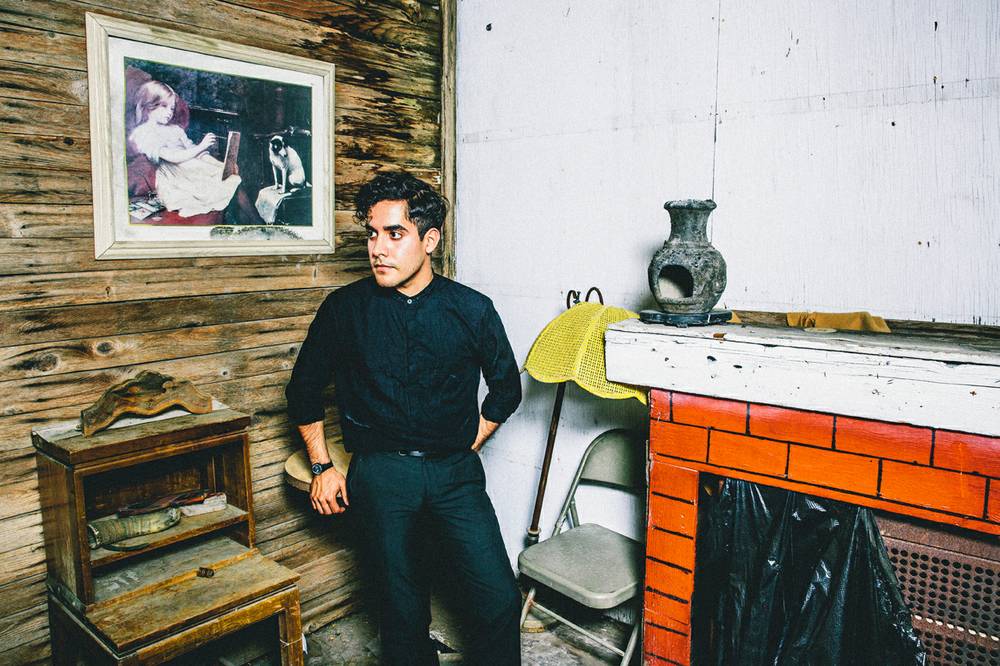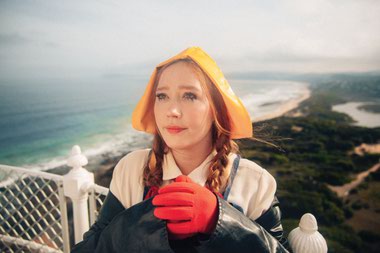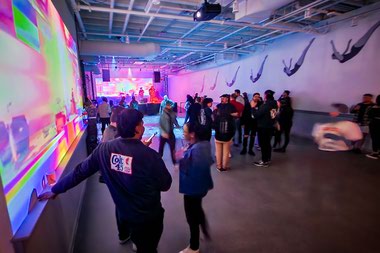Four years seems like a long time between album releases. But that’s how long Alan Palomo, the chief member and lone songwriter of Neon Indian, took to tour 2011’s Era Extraña, delve back into DJing and, more importantly, retool his primary band’s electro-pop sound—which he partly did by fusing the aesthetic of his more dance-based musical project, VEGA. The resulting album, VEGA INTL Night School, is a genre- and mind-bending work, Palomo’s diligence paying off not just in its free-spirited, montage-like presentation, but its razor-sharp songwriting. Palomo recently spoke to us about process.
The “night school” portion of VEGA INTL Night School refers to your experiences—and observing those of others—after dark. Which revelations and life lessons seemed to resonate with you the most, and did any of them get worked into the album? I think the idea of life lessons might be too on the nose for the metaphor of Night School—although it is a truth that you can’t write a song to make someone fall in love with you. Basically, Brooklyn is becoming the city of the transplant. People are moving here now right out of college and haven’t learned to conduct themselves … [They’re] going out and getting f*cked up and getting laid, which is what anyone that age does. And that was an interesting backdrop and great fodder to base the album on.
You reworked your sound and crafted VEGA INTL Night School for nearly four years. Were there clear-cut ways your sound progressed to what we now hear on the record, or were there a million little steps? It wasn’t that linear. Part of the reason I took so long was that I wanted to grow as a producer. Most songs were like problems to solve, like tracking live drums or engineering with more guitars and bass, or getting close to being able to mix. These were all very small triumphs that happened over time ... from demos to the last day of mastering.
Do you find it’s hard to wrangle or incorporate your wide range of musical influences and impulses into whatever album you’re working on and still have it sound like a unified effort, or have you developed a really good filter and sense of self-discipline? There were definitely other projects I worked on, only coming back [to VEGA INTL] when I felt galvanized and when I wanted to make another big leap. I was DJing a lot and hadn’t done that since I made [2009’s Psychic Chasms]. Back when I was in Denton, Texas, I voraciously collected records for my repertoire. It was about assembling a blueprint. Those tastes change over time, and it was a challenge to sort those influences. But I wanted [VEGA INTL] to be eclectic and sound like a collage and play with genre within the same song. There’s a lot of non-sequitur changes. Once I knew I’d do this, I wasn’t as nervous [incorporating] techno on a track like “C’est La Vie.”
The melodies on this album are really strong. Did they generally come to you quickly, or did you initially come up with a lot of things you had to fine-tune—or was it some combination of the two? There was a lot of fine-tuning. Typically the songs that come up as the most palatable, like “Polish Girl,” happened in one day, and [single] “Annie” was no exception. But there was a surplus of material I was editing. Before, it was like, “I wrote 11 songs, I’ve got a record.” This time, since I wanted it to be more of a collage record, I made as much content as possible. Much like making a film, it [came together] in the editing room … it was like, “I hate this demo, but I love that bridge, so let’s put it on another song.”
How did the phone-hotline promotion for the single “Slumlord” work out? It was all in all a perfect announcement, just what I was looking for. Given that there’s more pervy lyrics and a laissez-faire attitude, it made sense to announce it that way, as those late-night TV ads were my first real exposure to pornography. My brother and I would go to a phone and call them, even though we didn’t have a credit card. As a result, we never got too far.
Have the live shows become the dance parties that a rhythmic album like VEGA INTL would seem to promise? Or are there still some crowd members who are more interested in what you’re doing up onstage? It’s split down the middle. We put in a lot of work and energy, and it’s my favorite iteration of the show. It makes it fun. No one’s stressing out about the content; we’re happy just doing it. I feel like there’s a lot more dancing than there ever was. But yeah, some people are more interested in [the gear onstage], so it depends on the fan.
There have been moments through different records where I played a show and connected with a certain crowd, but this time it’s more consistent. It’s a bigger, busier record, with more hands on deck, and the live show reflects that.
Neon Indian Friday, March 11 (set time: 1 a.m.) at Fremont Country Club, $15, 18-and-over.








